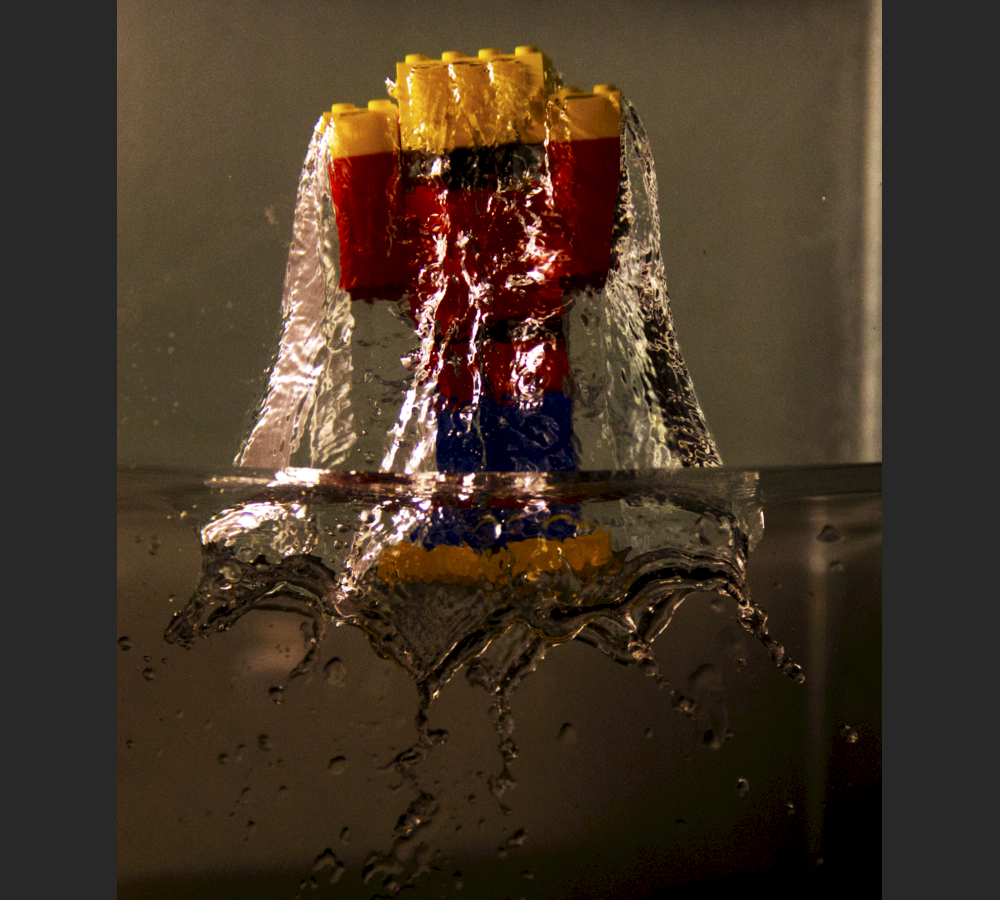By Eric Fauble, Alex Unger, Zac Rice, and Scott Hodges for Spring 2014 Team Third.
Read the Report
A Lego man creates a convoluted cavity and when dropped in water, shown flipped vertically. The splash is in the crown regime, determined by Reynolds and Weber numbers.

A Lego man creates a convoluted cavity and when dropped in water, shown flipped vertically. The splash is in the crown regime, determined by Reynolds and Weber numbers.
Categories
Search for content or authors
Flow Vis Guidebook
- Introduction to the Guidebook
- Overview 1: Phenomena. Why Does It Look Like That?
- Overview 2: Visualization Techniques
- Overview 3: Lighting
- Overview 4 - Photography A: Composition and Studio Workflow
- Overview 4 - Photography B: Cameras
- Overview 4 - Photography C: Lenses - Focal Length
- Overview 4 - Photography C: Lenses - Aperture and DOF
- Overview 4: Photography D: Exposure
- Overview 4 - Photography E - Resolution
- Overview 5 - Post-Processing
- Clouds 1: Names
- Clouds 2: Why Are There Clouds? Lift Mechanism 1: Instability
- Clouds 3: Skew - T and Instability
- Clouds 4: Clouds in Unstable Atmosphere
- Clouds 5: Lift Mechanism 2 - Orographics
- Clouds 6: Lift Mechanism 3 - Weather Systems
- Boundary Techniques - Introduction
- Dye Techniques 1 - Do Not Disturb
- Dye Techniques 2 - High Visibility
- Dye Techniques 3 - Light Emitting Fluids
- Refractive Index Techniques 1: Liquid Surfaces
- Refractive Index Techniques 2: Shadowgraphy and Schlieren
- Particle Physics: Flow and Light
- Dilute Particle Techniques - Under Construction
- Particles 2: Aerosols
- Particles 3: In Water - Under Construction
- Art and Science
- TOC and Zotpress test
- Photons, Wavelength and Color